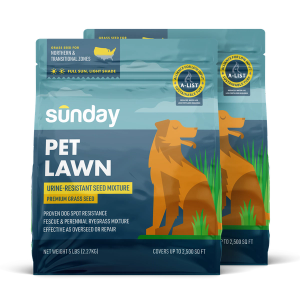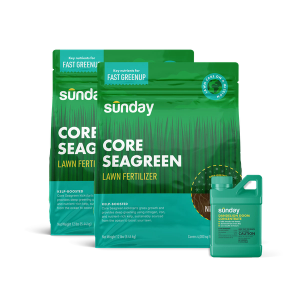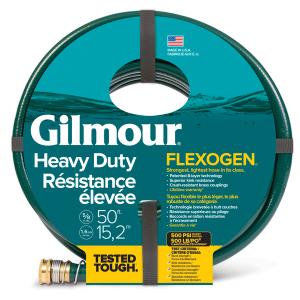How traffic affects your lawn
Lawns are made to be lived on, and every lawn experiences some level of traffic from mowing, playing, and pets. But exceeding normal wear and tear can leave a lasting impression on your lawn—quite literally.
The effects of high traffic on your lawn are twofold. There is the obvious damage that you can see on top of the surface, things like thin patches, mower wheel marks, brown spots, and even bare spots. But below the surface there is often an increased level of compaction. The traffic creates additional pressure on the ground which transfers into the soil, making it denser and restricting the air and water flow that it needs to produce healthy plants.
How to evaluate your traffic tolerance
Turfgrass is a tough plant. Your lawn can withstand a moderate amount of wear and tear. But it’s easy to see when traffic has become too much. Just look for thinning areas, if you see thin spots then your turf has reached the peak of its traffic tolerance. Thinning is the first sign of a problem, but that’s not where it ends. Continued traffic on thin spots will result in brown and bare patches that can lead to more severe soil issues.
Stages of high-traffic lawn impacts
- Some wear
- Wear during periods of growth
- Thinning grass
- Grass won’t grow at all
Grass and traffic tolerance
Turf is equipped with systems that are set up to tolerate a reasonable amount of wear. But it can only endure so much, so eventually the leaves need to be replaced. Typically warm-season grasses like bermudagrass will better tolerate high traffic during the warmer growing months. Whereas cool-season grasses like fescue will endure traffic better during the cooler months. One of the best first steps towards building lawn resilience is making sure you choose the correct type of grass for your climate.
How to restore damaged grass
There are a few simple steps to get your trampled lawn back to its old, beautiful and resilient self.
Overseed
After you’ve made sure you're using the correct seed for your growing climate, the first step is overseeding any areas showing wear.
Fertilize
If turf is wearing thin during peak growing seasons then be sure to add nitrogen or fertilizer to help boost growth and green-up.
Reroute
If fertilizer and additional seed isn’t enough to combat traffic trauma, it’s time to reroute traffic. Try putting pets in a different part of the lawn, widen walking paths or having children play in a new area. Be sure to seed again once the area is clear of traffic.
If you can’t reroute foot traffic, adding gravel, mulch, or pavers might be a good solution. But if you still want grass, then sod can be applied to larger areas with substantial traffic damage.
Tougher turf the Sunday way
At Sunday, our programs are designed to keep your lawn growing with minimal input. When it comes to high traffic damage, sometimes all a lawn needs is a little seed, water, and rest to get back to its resilient and green self.
Cited sources
Lawn Care With Dogs. IFAS Extension.
Turfgrass Traffic and Compaction: Problems and Solutions. University of California.



















